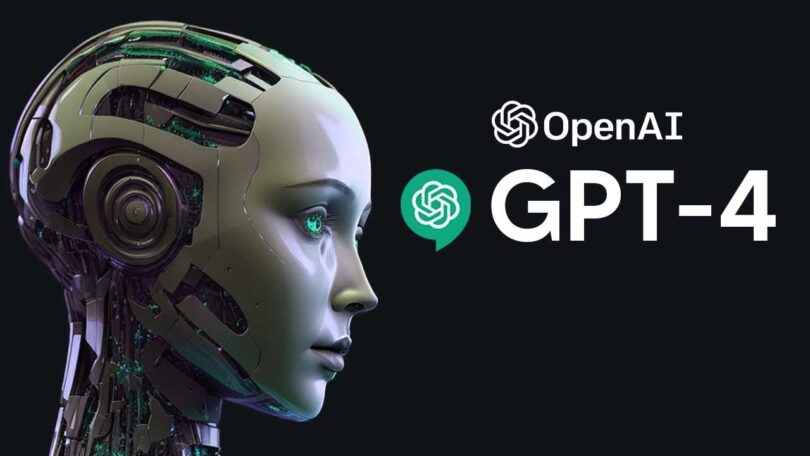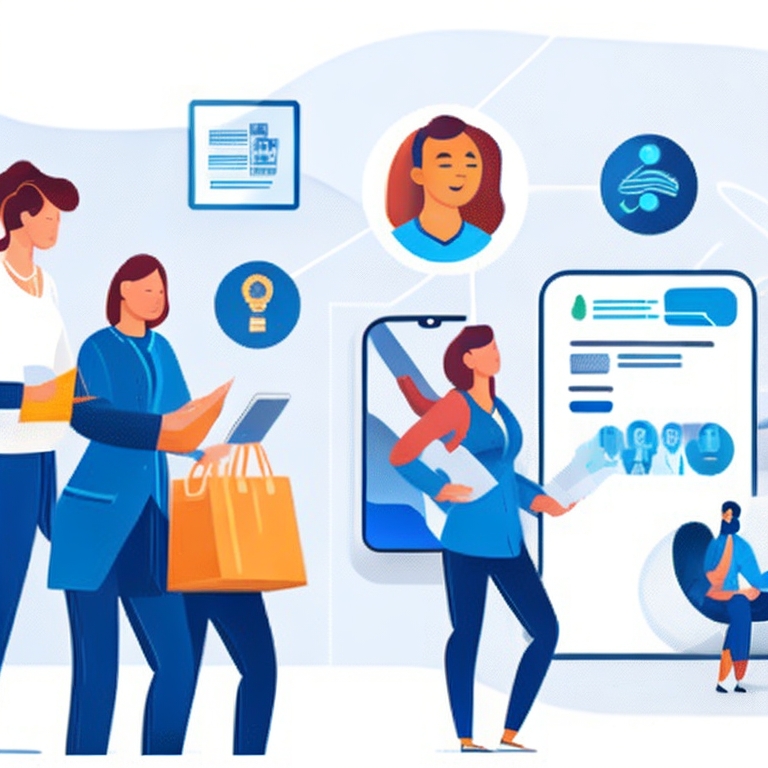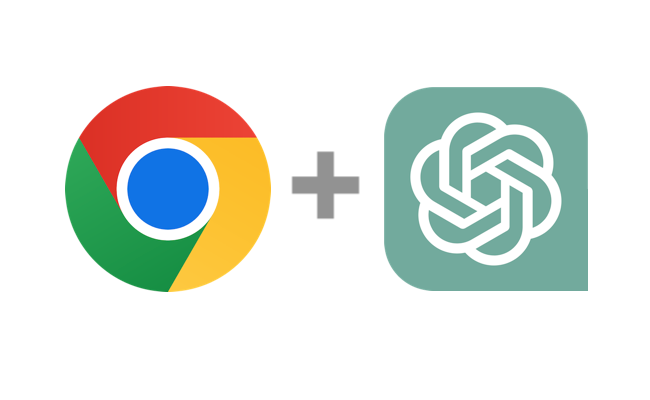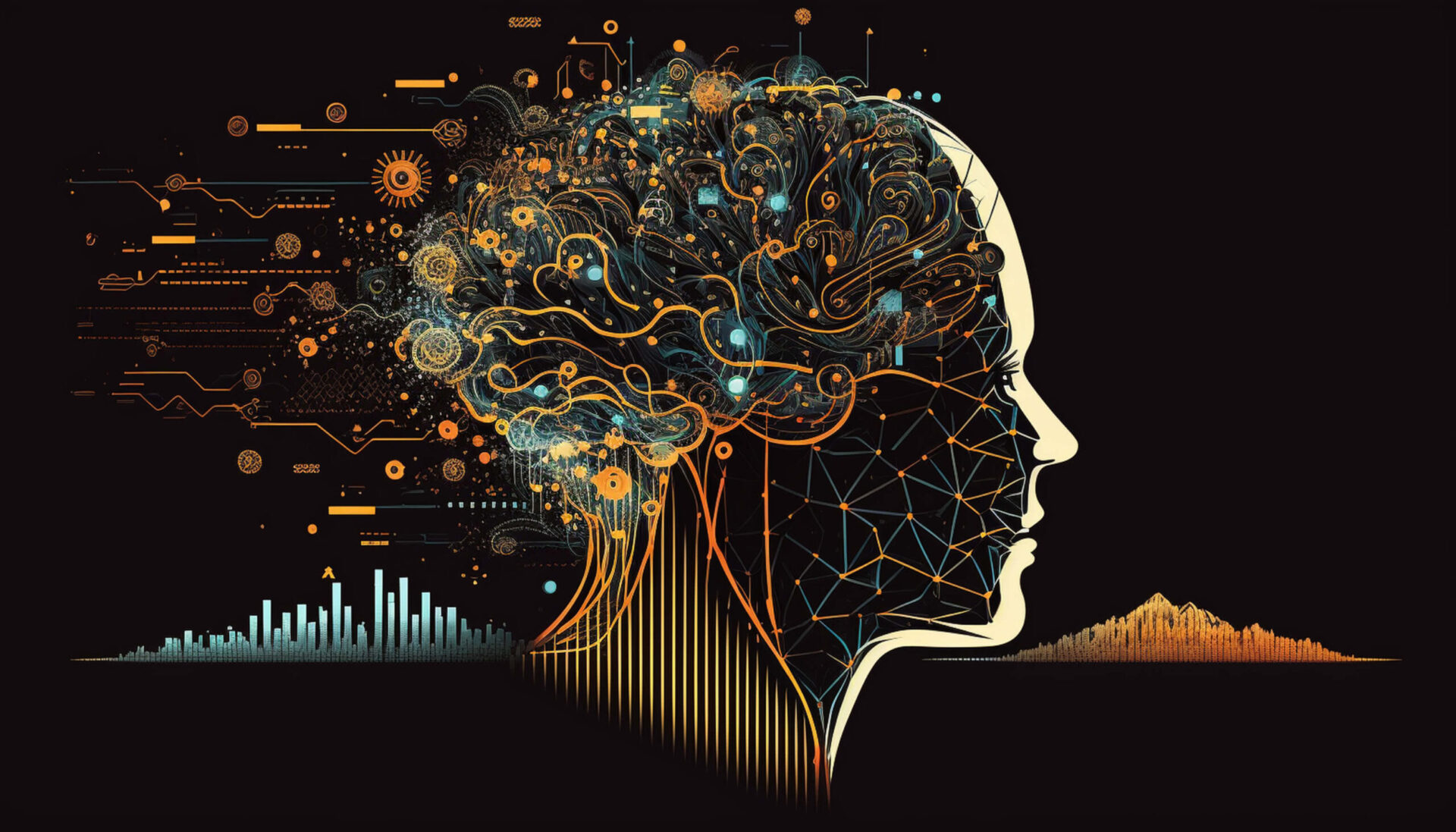Table of Contents
- Introduction to Chat GPT
- Understanding the Architecture
- Training and Fine-Tuning
- Creating Conversational Agents
- Handling Ethical Considerations
- Best Practices for Deployment
1. Introduction to Chat GPT
Lesson 1.1: What is Chat GPT?
- Overview of Chat GPT as a language model for conversational AI
- Historical context and development of Chat GPT
- Real-world applications and use cases
Lesson 1.2: The Power of Chat GPT
- Exploring the capabilities and limitations of Chat GPT
- Understanding the benefits of using Chat GPT in various industries
- Case studies showcasing successful implementations
2. Understanding the Architecture
Lesson 2.1: Neural Network Basics
- Introduction to neural networks and their role in natural language processing
- Key components of a neural network architecture
- Neural network training and inference process
Lesson 2.2: Transformer Architecture
- In-depth analysis of the Transformer architecture used in Chat GPT
- Understanding self-attention mechanisms and multi-head attention
- Exploring encoder-decoder structures and positional encodings
3. Training and Fine-Tuning
Lesson 3.1: Dataset Preparation
- Collecting and preprocessing data for training Chat GPT
- Ensuring data quality and diversity for optimal performance
- Handling biases and ethical considerations in training data
Lesson 3.2: Training Chat GPT
- Training pipeline and techniques for Chat GPT
- Fine-tuning strategies for domain-specific applications
- Evaluating model performance and metrics
4. Creating Conversational Agents
Lesson 4.1: Conversational AI Fundamentals
- Introduction to conversational AI and its components
- Dialogue management and context handling in Chat GPT
- Designing user interfaces for chatbot interactions
Lesson 4.2: Implementing Chat GPT as a Chatbot
- Integrating Chat GPT with messaging platforms and APIs
- Handling user inputs and generating appropriate responses
- Error handling and fallback mechanisms
5. Handling Ethical Considerations
Lesson 5.1: Bias and Fairness
- Understanding the impact of biases in AI-generated content
- Techniques to identify and mitigate biases in Chat GPT
- Ensuring fairness and inclusivity in conversational AI systems
Lesson 5.2: Privacy and Security
- Privacy concerns related to user data and conversational AI
- Security measures to protect user information and prevent abuse
- Compliance with data protection regulations and best practices
6. Best Practices for Deployment
Lesson 6.1: Deployment Strategies
- Choosing deployment options for Chat GPT applications
- Cloud-based solutions vs. on-premises deployments
- Scaling and optimizing performance for high user loads
Lesson 6.2: Continuous Improvement and Monitoring
- Iterative development and improvement of Chat GPT models
- Monitoring and addressing model biases and ethical issues
- Gathering user feedback and incorporating improvements
Introduction to Chat GPT
Lesson 1.1: What is Chat GPT?
Welcome to Lesson 1.1 of the Chat GPT Mastery course! In this lesson, we will dive into the fascinating world of Chat GPT and explore its significance as a language model for conversational AI. Let's get started!
Overview of Chat GPT as a Language Model for Conversational AI:
Chat GPT, developed by OpenAI, is an advanced language model designed to generate human-like text responses in a conversational manner. It is built upon the powerful GPT (Generative Pre-trained Transformer) architecture, which has revolutionized the field of natural language processing.
Unlike traditional chatbots that rely on rule-based approaches, Chat GPT leverages deep learning techniques to understand and generate meaningful responses based on the input it receives. It can engage in dynamic and context-aware conversations, making it a versatile tool for various applications.
Historical Context and Development of Chat GPT:
Chat GPT is a product of continuous advancements in natural language processing and deep learning. Its development builds upon the success of previous language models like GPT-2 and GPT-3. These models pushed the boundaries of language generation and set the stage for the creation of Chat GPT.
OpenAI has invested significant resources in training Chat GPT on massive amounts of text data from the internet. This extensive pre-training helps the model learn grammar, context, and even some factual knowledge. However, it's important to note that Chat GPT's responses are generated based on patterns and correlations in the data it was trained on, and it does not possess true understanding or consciousness.
Real-World Applications and Use Cases:
Chat GPT has found applications in a wide range of industries and scenarios due to its natural language understanding and generation capabilities. Some prominent use cases include:
a. Customer Support: Chat GPT can be used to provide instant and personalized responses to customer inquiries, enhancing the efficiency and effectiveness of customer support services.
b. Virtual Assistants: By integrating Chat GPT into virtual assistant applications, users can engage in more natural and interactive conversations to perform tasks, get information, or seek assistance.
c. Content Generation: Chat GPT can assist in generating creative content, such as blog articles, product descriptions, or social media posts, by understanding the context and generating coherent text.
d. Language Tutoring: Language learners can practice conversations with Chat GPT, which can simulate interactions and provide feedback, helping them improve their language skills.
e. Gaming and Interactive Entertainment: Chat GPT can be employed in video games and interactive storytelling, enabling players to engage with non-player characters (NPCs) in more dynamic and immersive ways.
These are just a few examples of how Chat GPT is transforming various industries and enhancing user experiences through conversational AI.
In the next lesson, we will explore the power of Chat GPT in more detail, examining its capabilities and limitations. Get ready for an exciting journey into the world of conversational AI!
Lesson 1.2: The Power of Chat GPT
Welcome to Lesson 1.2 of the Chat GPT Mastery course! In this lesson, we will delve into the immense power of Chat GPT as a language model for conversational AI. We will explore its capabilities, limitations, and the benefits it brings to various industries. Additionally, we will examine real-world case studies that highlight successful implementations. Let's begin!
Exploring the Capabilities and Limitations of Chat GPT:
Chat GPT exhibits impressive capabilities that make it a valuable tool for conversational AI. Some of its key strengths include:
a. Natural Language Understanding: Chat GPT can comprehend and interpret a wide range of user inputs, including questions, statements, and commands. It can grasp the context and generate responses that are contextually relevant and coherent.
b. Contextual Awareness: Chat GPT can maintain a conversational context, allowing it to respond appropriately to follow-up questions or references made earlier in the conversation. This contextual awareness enhances the overall user experience.
c. Language Flexibility: Chat GPT can adapt to different conversational styles and tones. It can mimic specific personalities, use appropriate language registers, and generate responses that align with the desired conversational atmosphere.
Despite its remarkable capabilities, Chat GPT does have limitations:
a. Sensitivity to Input Phrasing: The way a user inputs a question or statement can impact the response generated by Chat GPT. Small changes in phrasing might result in different answers, and it may sometimes produce inaccurate or nonsensical responses.
b. Lack of Factual Understanding: While Chat GPT can provide plausible-sounding responses, it does not possess true understanding of facts. It relies on patterns learned during training and may occasionally generate incorrect or misleading information.
Understanding the Benefits of Using Chat GPT in Various Industries:
The integration of Chat GPT in diverse industries brings numerous benefits:
a. Enhanced Customer Experience: Chat GPT enables businesses to provide personalized and efficient customer interactions. It can handle a high volume of inquiries, provide instant responses, and offer 24/7 support, resulting in improved customer satisfaction.
b. Time and Cost Savings: By automating repetitive tasks and reducing the need for human intervention, Chat GPT can save valuable time and resources for businesses. It can handle routine customer queries, freeing up human agents to focus on more complex issues.
c. Scalability and Availability: Chat GPT can handle multiple conversations simultaneously, making it highly scalable. It allows businesses to cater to a large user base without compromising response times or quality of service.
d. Increased Productivity: With Chat GPT's assistance, employees can offload mundane and repetitive tasks, enabling them to focus on higher-value activities. This can lead to increased productivity and efficiency within organizations.
Case Studies Showcasing Successful Implementations:
Real-world case studies demonstrate the practical applications and success of Chat GPT:
a. Customer Support Chatbots: Many companies have implemented Chat GPT-based chatbots to handle customer queries. These chatbots provide instant responses, resolve common issues, and escalate complex problems to human agents when needed.
b. Virtual Assistants: Virtual assistants powered by Chat GPT have been deployed across platforms, offering personalized assistance to users. These assistants can perform tasks, provide recommendations, and engage in natural and dynamic conversations.
c. Content Generation: Chat GPT has been utilized to generate engaging and relevant content across various industries. It assists in drafting articles, product descriptions, and social media posts, saving time and effort for content creators.
d. Language Learning Applications: Language tutoring platforms have integrated Chat GPT to simulate conversations with users, helping them practice and improve their language skills through interactive dialogues.
These case studies exemplify the real-world impact and success achieved by incorporating Chat GPT into different domains.
In the next lesson, we will explore the technical aspects of the Chat GPT architecture, providing you with a deeper understanding of its underlying structure. Get ready to unravel the inner workings of Chat GPT!
Understanding the Architecture
Lesson 2.1: Neural Network Basics
Welcome to Lesson 2.1 of the Chat GPT Mastery course! In this lesson, we will introduce you to the fundamental concepts of neural networks and their crucial role in natural language processing (NLP). We will explore the key components of a neural network architecture and provide an overview of the neural network training and inference processes. Let's get started!
Introduction to Neural Networks and their Role in Natural Language Processing:
Neural networks are a class of machine learning models inspired by the structure and functioning of the human brain. They are powerful tools for processing and analyzing complex data, making them particularly well-suited for NLP tasks.
In NLP, neural networks excel at understanding and generating human language by learning from large amounts of text data. They capture the underlying patterns, relationships, and semantics of language, enabling them to perform tasks like language translation, sentiment analysis, and text generation.
Key Components of a Neural Network Architecture:
Neural networks consist of interconnected layers of artificial neurons (also known as nodes or units). The primary components of a neural network architecture include:
a. Input Layer: The input layer receives the raw data or features used as input for the network. In NLP, this could be word embeddings or encoded representations of words or sentences.
b. Hidden Layers: Hidden layers are the intermediate layers between the input and output layers. They perform complex computations and extract high-level representations of the input data through a series of mathematical operations.
c. Output Layer: The output layer provides the final prediction or output of the neural network. In NLP, this could be the probability distribution over different language classes or the generated text.
d. Neurons and Activation Functions: Neurons are the basic computational units within a neural network. Each neuron applies an activation function to the weighted sum of its inputs, introducing non-linearity to the model. Activation functions, such as ReLU (Rectified Linear Unit) or sigmoid, determine the output of a neuron.
e. Weights and Biases: Neural networks learn from data by adjusting the weights and biases associated with the connections between neurons. These parameters control the influence of each input on the neuron's output and are updated during the training process.
Neural Network Training and Inference Process:
Neural network training involves the following steps:
a. Forward Propagation: During forward propagation, input data is passed through the network, layer by layer, from the input to the output layer. The activations and outputs of each layer are computed based on the current values of weights and biases.
b. Loss Calculation: The network's output is compared to the desired or target output using a loss function. The loss function measures the discrepancy between the predicted output and the ground truth, indicating how well the network is performing.
c. Backpropagation: Backpropagation is used to update the weights and biases of the network in a way that minimizes the loss. It computes the gradients of the loss function with respect to the network parameters, allowing for efficient parameter updates using optimization algorithms like stochastic gradient descent (SGD).
d. Iterative Training: The forward propagation, loss calculation, and backpropagation steps are repeated iteratively on batches of training data. This iterative process gradually adjusts the network's parameters, optimizing its performance on the given task.
Once the neural network is trained, it can be used for inference, where new data is passed through the network to obtain predictions or generate text based on the learned patterns and representations.
In the next lesson, we will explore the specific architecture used in Chat GPT: the Transformer. Prepare yourself for an in-depth understanding of this revolutionary model!
Lesson 2.2: Transformer Architecture
Welcome to Lesson 2.2 of the Chat GPT Mastery course! In this lesson, we will take an in-depth look at the Transformer architecture, which forms the backbone of Chat GPT. We will explore the key components of the Transformer, including self-attention mechanisms, multi-head attention, encoder-decoder structures, and positional encodings. Let's dive in!
- Understanding the Transformer Architecture: The Transformer architecture, introduced by Vaswani et al. (2017), revolutionized the field of NLP with its ability to capture contextual information efficiently. It relies on a self-attention mechanism, enabling it to attend to different parts of the input sequence simultaneously.
- Self-Attention Mechanisms: Self-attention allows the Transformer to weigh the importance of different words or tokens in a sequence when generating representations. It computes attention scores between each word and all other words in the sequence. This mechanism enables the model to capture dependencies and relationships between words without being limited by sequential processing.
- Multi-Head Attention: The Transformer employs multi-head attention to enhance its representational capacity. It splits the self-attention mechanism into multiple heads, allowing the model to attend to different subspaces of the input representation simultaneously. Each head can focus on different aspects of the input, capturing diverse patterns and dependencies.
- Encoder-Decoder Structures: The Transformer architecture consists of an encoder and a decoder. The encoder processes the input sequence, while the decoder generates the output sequence. This structure is particularly effective for sequence-to-sequence tasks, such as machine translation or text generation.
- Positional Encodings: To incorporate positional information into the model, positional encodings are added to the input embeddings. These encodings provide the Transformer with information about the position of each word in the sequence. They allow the model to capture the order and sequence of words, which is crucial for understanding language.
The combination of self-attention mechanisms, multi-head attention, encoder-decoder structures, and positional encodings forms the core of the Transformer architecture. It enables the model to efficiently process and generate high-quality text representations.
In the next lesson, we will explore the training process of Chat GPT, including the pre-training and fine-tuning stages. Get ready to unravel the training secrets behind Chat GPT's remarkable capabilities!
Training and Fine-Tuning
Lesson 3.1: Dataset Preparation
Welcome to Lesson 3.1 of the Chat GPT Mastery course! In this lesson, we will explore the crucial steps involved in preparing the dataset for training Chat GPT. We will discuss the collection and preprocessing of data, ensuring data quality and diversity, and addressing biases and ethical considerations. Let's begin!
Collecting Data for Training Chat GPT:
To train Chat GPT effectively, a diverse and representative dataset is essential. The data can be collected from various sources, such as online forums, social media platforms, books, articles, and publicly available conversational datasets. It is important to ensure that the dataset covers a wide range of topics and conversation styles to make the model more versatile.
Preprocessing the Data:
Before feeding the data into Chat GPT, it needs to undergo preprocessing. This typically involves the following steps:
a. Text Cleaning: Remove any irrelevant or unnecessary elements from the text, such as HTML tags, special characters, or excessive punctuation. This helps ensure the model focuses on the meaningful content.
b. Tokenization: Split the text into individual tokens (words, subwords, or characters) to create the input representation for the model. Tokenization facilitates the understanding and processing of the text by Chat GPT.
c. Data Formatting: Organize the data into appropriate input-output pairs. For example, for a conversational model, each input might be a user message, and the corresponding output would be the model's response.
Ensuring Data Quality and Diversity:
To achieve optimal performance, it is important to ensure the quality and diversity of the training data:
a. Quality: Clean the dataset thoroughly, removing any noise, irrelevant content, or low-quality examples. This helps maintain high standards and improves the model's ability to generate accurate and meaningful responses.
b. Diversity: Incorporate a diverse range of conversation topics, styles, and perspectives into the dataset. Including conversations from different domains and demographics helps the model understand and respond effectively to a broader set of user inputs.
Handling Biases and Ethical Considerations:
When working with large datasets, it is crucial to address biases and ethical considerations:
a. Bias Identification: Analyze the dataset for potential biases related to gender, race, religion, or other sensitive topics. Identify and understand any biases present to mitigate their impact on the model's responses.
b. Bias Mitigation: Take steps to mitigate biases by carefully curating the dataset, including diverse perspectives, and implementing techniques like debiasing algorithms or manual moderation to ensure fairness and inclusivity.
c. Ethical Guidelines: Develop and adhere to ethical guidelines for the use of Chat GPT. Consider the potential impact of generated content and ensure responsible deployment to avoid promoting harmful or misleading information.
By following these practices, we can create a high-quality, diverse, and ethically sound dataset for training Chat GPT.
In the next lesson, we will explore the training process of Chat GPT, including pre-training and fine-tuning. Get ready to delve into the training secrets of Chat GPT!
Lesson 3.2: Training Chat GPT
Welcome to Lesson 3.2 of the Chat GPT Mastery course! In this lesson, we will explore the training process of Chat GPT. We will discuss the training pipeline, techniques used for training, fine-tuning strategies for domain-specific applications, and methods for evaluating model performance. Let's get started!
Training Pipeline and Techniques for Chat GPT:
The training of Chat GPT typically involves two stages: pre-training and fine-tuning.
a. Pre-training: In the pre-training stage, Chat GPT is trained on a large corpus of publicly available text from the internet. The model learns to predict the next word in a sentence by leveraging self-supervised learning techniques like masked language modeling. This helps the model capture language patterns and semantic relationships.
b. Fine-tuning: After pre-training, the model is fine-tuned on a more specific dataset that is curated and tailored to the desired application. Fine-tuning involves training the model on a task-specific dataset with supervised learning, where the model learns to generate appropriate responses based on input prompts.
Fine-tuning Strategies for Domain-Specific Applications:
Fine-tuning allows us to adapt Chat GPT to specific domains or applications. Here are some strategies for fine-tuning:
a. Domain-Specific Dataset: Curate a dataset that is specific to the target domain or application. This dataset should contain relevant input-output pairs that align with the desired conversational context.
b. Prompt Engineering: Design effective prompts or user instructions that guide the model's responses. Carefully crafted prompts can help steer the model towards generating desired and contextually appropriate responses.
c. Transfer Learning: Leverage knowledge from pre-training by transferring the learned representations and language understanding abilities to the fine-tuning process. This enables the model to benefit from the broad linguistic knowledge captured during pre-training.
Evaluating Model Performance and Metrics:
Evaluating the performance of Chat GPT is crucial to ensure its effectiveness. Here are some key evaluation techniques and metrics:
a. Human Evaluation: Conduct qualitative assessments by having human evaluators interact with the model and rate the quality of generated responses. Human evaluation provides valuable insights into the model's fluency, coherence, relevance, and overall user experience.
b. Automatic Evaluation Metrics: Utilize automated metrics like perplexity, BLEU (Bilingual Evaluation Understudy), ROUGE (Recall-Oriented Understudy for Gisting Evaluation), or METEOR (Metric for Evaluation of Translation with Explicit ORdering) to quantitatively assess the quality of generated responses. These metrics provide objective measures of fluency, similarity to references, and other linguistic aspects.
c. Domain-Specific Metrics: Define domain-specific metrics that align with the specific application or task. For example, in a customer support chatbot application, metrics like issue resolution rate, customer satisfaction scores, or response accuracy can be used to evaluate the model's performance.
By employing a combination of human evaluation, automated metrics, and domain-specific measures, we can gain a comprehensive understanding of Chat GPT's performance.
In the next lesson, we will focus on best practices for deploying and maintaining Chat GPT in real-world applications. Get ready to learn how to unleash the power of Chat GPT in practical scenarios!
Creating Conversational Agents
Lesson 4.1: Conversational AI Fundamentals
Welcome to Lesson 4.1 of the Chat GPT Mastery course! In this lesson, we will delve into the fundamentals of conversational AI. We will explore the components of conversational AI, including dialogue management and context handling in Chat GPT. Additionally, we will discuss the design principles for user interfaces in chatbot interactions. Let's begin!
Introduction to Conversational AI and Its Components:
Conversational AI involves designing systems that can engage in human-like conversations. It encompasses various components that work together to enable meaningful interactions. These components include:
a. Natural Language Understanding (NLU): NLU helps the system comprehend and interpret user inputs by extracting relevant information and intent. It involves techniques like entity recognition, intent classification, and sentiment analysis.
b. Dialogue Management: Dialogue management focuses on controlling and guiding the flow of conversation. It involves keeping track of the dialogue history, managing context, and making decisions about the system's responses based on user inputs and the current conversation state.
c. Natural Language Generation (NLG): NLG is responsible for generating human-like and contextually appropriate responses. It involves converting system-generated information into natural language that users can understand and interact with.
Dialogue Management and Context Handling in Chat GPT:
Chat GPT relies on effective dialogue management and context handling to maintain coherent and engaging conversations. Here are some key considerations:
a. Context Preservation: Chat GPT needs to maintain an understanding of the conversation's context and history. The model should be capable of referring back to previous messages, understanding user references, and generating responses that align with the ongoing conversation.
b. User Intent Recognition: Efficient dialogue management involves accurately recognizing user intents and extracting relevant information. By understanding user goals, the system can provide more personalized and relevant responses.
c. Turn-Taking and Flow: Dialogue management should ensure smooth turn-taking and flow in the conversation. The system should respond promptly, avoiding long delays, and maintain a coherent back-and-forth interaction with the user.
Designing User Interfaces for Chatbot Interactions:
The user interface plays a crucial role in delivering a seamless and user-friendly chatbot experience. Here are some design principles to consider:
a. Clarity and Simplicity: Design the user interface to be clear, intuitive, and easy to navigate. Use simple language and visual cues to guide users through the conversation.
b. Personalization: Tailor the user interface to reflect the chatbot's personality or branding. This can create a more engaging and memorable user experience.
c. Contextual Help and Suggestions: Provide contextual help and suggestions to assist users during the conversation. This can include offering predefined options, autocomplete suggestions, or quick links to common actions.
d. Error Handling and Recovery: Anticipate and handle user errors gracefully. Provide informative error messages and guide users towards resolving any issues they encounter during the conversation.
By incorporating these design principles, we can create user interfaces that enhance the conversational AI experience and ensure user satisfaction.
In the next lesson, we will explore advanced techniques for enhancing Chat GPT's performance, including reinforcement learning and domain adaptation. Get ready to take your Chat GPT skills to the next level!
Lesson 4.2: Implementing Chat GPT as a Chatbot
Welcome to Lesson 4.2 of the Chat GPT Mastery course! In this lesson, we will explore the implementation of Chat GPT as a chatbot. We will discuss how to integrate Chat GPT with messaging platforms and APIs, handle user inputs, generate appropriate responses, and implement error handling and fallback mechanisms. Let's dive in!
Integrating Chat GPT with Messaging Platforms and APIs:
To make Chat GPT accessible through messaging platforms, you can integrate it using APIs. Here's a general workflow for integration:
a. Choose a Messaging Platform: Select a messaging platform or platforms that you want to deploy your chatbot on. Popular choices include Facebook Messenger, Slack, WhatsApp, or custom web chat interfaces.
b. Set up API Integration: Utilize the APIs provided by the messaging platform to establish communication between the platform and your chatbot backend. This allows your chatbot to send and receive messages in real-time.
c. Message Handling: Implement code in your chatbot backend to receive and process incoming messages from the messaging platform. This typically involves extracting the user's message and passing it to the Chat GPT model for generating a response.
Handling User Inputs and Generating Appropriate Responses:
When handling user inputs and generating responses, consider the following steps:
a. Message Preprocessing: Preprocess user messages by tokenizing and cleaning them before feeding them to the model. Tokenization ensures that the input is in a suitable format for the Chat GPT model.
b. Context and State Management: Maintain the context and state of the conversation to ensure coherent and context-aware responses. Keep track of the conversation history and relevant information to generate appropriate responses.
c. Model Inference: Pass the preprocessed user input to the Chat GPT model for generating a response. Retrieve the model's output and decode it into human-readable text for the user.
d. Postprocessing: Postprocess the model's response to format it appropriately for the messaging platform. This may involve adding line breaks, removing unnecessary tokens, or applying any necessary transformations.
Error Handling and Fallback Mechanisms:
To handle errors and provide fallback responses when the model cannot generate an appropriate response, consider the following strategies:
a. Error Detection: Implement mechanisms to detect when the model's response may be unreliable or incoherent. This can involve analyzing confidence scores, checking for unusual patterns, or monitoring user feedback.
b. Fallback Responses: Prepare a set of predefined fallback responses that the chatbot can use in situations where the model's output may not meet the desired quality or relevance. Fallback responses should be informative and helpful to the user.
c. Escalation and Human Takeover: If the chatbot encounters difficulties in generating appropriate responses, provide an option for users to escalate the conversation to a human operator. Human takeover ensures a smooth transition and allows for personalized and expert assistance.
By implementing these strategies, you can create a robust and user-friendly chatbot powered by Chat GPT.
In the next lesson, we will explore ethical considerations and best practices for deploying and maintaining Chat GPT in real-world applications. Get ready to learn how to ensure responsible and effective use of Chat GPT!
Handling Ethical Considerations
Lesson 5.1: Bias and Fairness
Welcome to Lesson 5.1 of the Chat GPT Mastery course! In this lesson, we will discuss the important topic of bias and fairness in AI-generated content. We will explore the impact of biases, techniques to identify and mitigate biases in Chat GPT, and strategies to ensure fairness and inclusivity in conversational AI systems. Let's begin!
Understanding the Impact of Biases in AI-Generated Content:
AI models, including Chat GPT, can inadvertently amplify biases present in the training data. This can result in biased or unfair responses generated by the model. It is crucial to understand the impact of biases to ensure responsible and ethical use of Chat GPT.
a. Bias Amplification: AI models learn patterns from the data they are trained on. If the training data contains biases, the model can learn and reproduce those biases in its generated content. This can perpetuate stereotypes, discrimination, or unequal treatment in the responses.
b. Unintentional Biases: Biases can exist in various forms, including gender, race, religion, or cultural stereotypes. Unintentional biases may arise due to the underrepresentation or overrepresentation of certain groups in the training data.
Techniques to Identify and Mitigate Biases in Chat GPT:
To address biases in Chat GPT, it is essential to employ techniques that help identify and mitigate them effectively. Here are some strategies:
a. Bias Identification: Perform an analysis of the model's outputs to identify potential biases. This can involve manual inspection of generated responses, evaluating responses against diverse prompts, or using automated bias detection tools.
b. Dataset Curation: Improve the quality and diversity of the training data by curating datasets that are more representative of the target user population. This can help reduce biases in the model's learned behavior.
c. Debiasing Techniques: Apply debiasing techniques during the training process to explicitly mitigate biases. These techniques can involve modifying the training data, augmenting with counterfactual examples, or incorporating fairness constraints during training.
Ensuring Fairness and Inclusivity in Conversational AI Systems:
Promoting fairness and inclusivity is crucial for responsible deployment of conversational AI systems. Here are some strategies to ensure fairness and inclusivity:
a. Diverse Training Data: Incorporate diverse perspectives and voices in the training data to reduce biases and improve the system's understanding and responses to different user groups.
b. User Feedback and Iterative Improvement: Encourage users to provide feedback on the system's responses. Regularly analyze feedback and iteratively improve the system to address biases and better serve users from all backgrounds.
c. Inclusive Design: Adopt inclusive design principles when creating the chatbot user interface and interaction flow. Consider the needs, preferences, and potential biases of diverse user groups to create an inclusive and user-friendly experience.
d. Regular Auditing and Monitoring: Continuously audit and monitor the system's performance to detect and address any biases that may arise over time. This includes analyzing user interactions, evaluating outputs against fairness metrics, and making necessary adjustments to mitigate biases.
By implementing these techniques and strategies, we can work towards creating fair, unbiased, and inclusive conversational AI systems using Chat GPT.
In the next lesson, we will explore best practices for deploying and maintaining Chat GPT, including considerations for privacy and security. Get ready to learn how to ensure the responsible and secure use of Chat GPT in real-world applications!
Lesson 5.2: Privacy and Security
Welcome to Lesson 5.2 of the Chat GPT Mastery course! In this lesson, we will delve into the important topics of privacy and security in the context of conversational AI. We will discuss privacy concerns related to user data and conversational AI, security measures to protect user information and prevent abuse, and the importance of compliance with data protection regulations and best practices. Let's get started!
Privacy Concerns Related to User Data and Conversational AI:
Conversational AI systems, including Chat GPT, interact with user data, raising privacy concerns. It is essential to address these concerns to ensure the responsible and ethical use of Chat GPT. Here are some key privacy considerations:
a. Data Collection: Clearly communicate to users what data is collected during their interactions with the chatbot. Obtain user consent for data collection and ensure that it aligns with applicable data protection laws and regulations.
b. Data Storage and Retention: Implement secure and compliant data storage practices. Only retain user data for as long as necessary and provide mechanisms for users to request data deletion or manage their data preferences.
c. Anonymization and Aggregation: Consider anonymizing or aggregating user data to protect individual privacy. This involves removing personally identifiable information and ensuring that the data cannot be linked back to specific individuals.
Security Measures to Protect User Information and Prevent Abuse:
Safeguarding user information is paramount when deploying conversational AI systems. Here are some security measures to consider:
a. Encryption: Employ encryption techniques to protect user data during transmission and storage. This includes encrypting data at rest and in transit, using secure protocols, and implementing robust encryption key management practices.
b. Access Control: Implement strong access controls to restrict unauthorized access to user data. Only provide access privileges to individuals who require it for system maintenance or support purposes.
c. Threat Monitoring and Detection: Employ monitoring mechanisms to detect and respond to security threats and potential abuses. This can include monitoring system logs, implementing anomaly detection algorithms, and conducting regular security audits.
d. User Authentication: Implement secure user authentication mechanisms to verify the identity of users interacting with the chatbot. This helps prevent unauthorized access and ensures that only legitimate users can access sensitive information.
Compliance with Data Protection Regulations and Best Practices:
Ensure compliance with relevant data protection regulations, such as the General Data Protection Regulation (GDPR) or other applicable laws. Here are some best practices to follow:
a. Privacy Policy and Transparency: Maintain a clear and accessible privacy policy that outlines how user data is collected, used, and protected. Communicate this information to users transparently and provide mechanisms for users to exercise their data rights.
b. User Consent: Obtain informed and explicit user consent for data collection and processing activities. Clearly explain the purpose and scope of data usage and provide options for users to opt-in or opt-out.
c. Regular Auditing and Assessments: Conduct regular privacy and security audits to assess compliance with regulations and identify areas for improvement. Stay updated with evolving privacy standards and adapt your practices accordingly.
d. Vendor and Third-Party Management: If using external vendors or third-party services, ensure they adhere to privacy and security standards. Conduct due diligence when selecting vendors and maintain contractual agreements that address data protection requirements.
By prioritizing privacy and implementing robust security measures, we can build trust with users and ensure the responsible use of Chat GPT in real-world applications.
In the next lesson, we will wrap up the course by discussing strategies for ongoing improvement and maintenance of Chat GPT. Get ready to learn how to continuously enhance the performance and usability of your Chat GPT system!
Best Practices for Deployment
Lesson 6.1: Deployment Strategies
Welcome to Lesson 6.1 of the Chat GPT Mastery course! In this lesson, we will explore different deployment strategies for Chat GPT applications. We will discuss choosing between cloud-based solutions and on-premises deployments, as well as scaling and optimizing performance for high user loads. Let's dive in!
Choosing Deployment Options for Chat GPT Applications:
When deploying Chat GPT applications, you have several deployment options to consider based on your specific requirements. Here are two common deployment options:
a. Cloud-based Solutions: Cloud-based deployment involves hosting your Chat GPT application on a cloud platform such as Amazon Web Services (AWS), Google Cloud Platform (GCP), or Microsoft Azure. This option offers scalability, flexibility, and easy access to various cloud services that can enhance your application's performance and availability.
b. On-premises Deployments: On-premises deployment involves hosting your Chat GPT application on your own hardware infrastructure within your organization's premises. This option provides greater control over data privacy and security, especially when dealing with sensitive information. However, it requires sufficient hardware resources and maintenance.
Consider factors such as scalability, cost, data privacy, security requirements, and technical expertise when deciding on the most suitable deployment option for your Chat GPT application.
Scaling and Optimizing Performance for High User Loads:
As the user load on your Chat GPT application increases, it becomes crucial to scale and optimize its performance to ensure smooth and responsive interactions. Here are some strategies to achieve that:
a. Load Balancing: Implement load balancing techniques to distribute user requests across multiple instances of Chat GPT. This helps prevent bottlenecks and ensures optimal resource utilization.
b. Caching: Implement caching mechanisms to store frequently accessed data or precomputed responses. This reduces the computational load on the system and improves response times.
c. Performance Monitoring: Continuously monitor the performance of your Chat GPT application using monitoring tools. Identify performance bottlenecks, analyze response times, and optimize resource allocation accordingly.
d. Auto-Scaling: Utilize auto-scaling capabilities offered by cloud platforms to automatically adjust the number of instances based on the current user load. This ensures that your Chat GPT application can handle varying levels of traffic without manual intervention.
e. Performance Testing: Conduct thorough performance testing to simulate high user loads and identify any potential performance issues. Optimize the system configuration, resource allocation, and algorithms based on the test results.
Remember that the optimal scaling and performance optimization strategies may vary depending on your specific application requirements, user load patterns, and chosen deployment option.
In the next lesson, we will wrap up the course by discussing strategies for ongoing improvement and maintenance of Chat GPT applications. Get ready to learn how to continuously enhance the performance and usability of your Chat GPT system!
Lesson 6.2: Continuous Improvement and Monitoring
Welcome to Lesson 6.2, the final lesson of the Chat GPT Mastery course! In this lesson, we will discuss strategies for continuous improvement and monitoring of Chat GPT models. We will explore iterative development, addressing model biases and ethical issues, gathering user feedback, and incorporating improvements into your Chat GPT system. Let's get started!
Iterative Development and Improvement of Chat GPT Models:
The field of AI is ever-evolving, and it is crucial to continuously improve your Chat GPT models. Here are some strategies for iterative development and improvement:
a. Ongoing Training: Continue training your Chat GPT model with new and diverse datasets to enhance its performance and language understanding. This can involve incorporating user interactions, collecting user feedback, and augmenting the training data with relevant and up-to-date information.
b. Fine-tuning: Implement fine-tuning techniques to refine your Chat GPT model for specific domains or use cases. Fine-tuning allows you to adapt the model's behavior to better suit the desired context and improve its response quality.
c. Performance Evaluation: Regularly evaluate the performance of your Chat GPT model using relevant metrics and benchmarks. This helps identify areas that require improvement and guides your iterative development process.
Monitoring and Addressing Model Biases and Ethical Issues:
To ensure responsible and ethical use of Chat GPT, it is essential to monitor and address any biases or ethical issues that may arise. Here are some strategies to consider:
a. Bias Detection and Mitigation: Continuously monitor the outputs of your Chat GPT system for potential biases. Employ techniques to detect and mitigate biases, such as analyzing responses for fairness and inclusivity and applying debiasing methods during training.
b. Ethical Guidelines and Review: Establish ethical guidelines for the behavior of your Chat GPT system, taking into account societal norms and potential ethical dilemmas. Regularly review and update these guidelines to ensure alignment with evolving ethical standards.
c. User Safety and Well-being: Prioritize user safety and well-being in the design and operation of your Chat GPT system. Implement measures to identify and handle sensitive or harmful content, and provide appropriate support or resources when necessary.
Gathering User Feedback and Incorporating Improvements:
User feedback is invaluable for improving the performance and usability of your Chat GPT system. Here are some strategies to gather and incorporate user feedback:
a. Feedback Channels: Provide multiple channels for users to provide feedback, such as in-app feedback forms, surveys, or support systems. Encourage users to share their experiences, report issues, and suggest improvements.
b. User Experience Testing: Conduct user experience testing sessions to gather qualitative feedback on the system's usability, clarity, and effectiveness. Incorporate user insights to refine the user interface and improve the overall user experience.
c. Continuous Deployment of Improvements: Establish a feedback loop and deployment process that allows for quick integration of user feedback and improvements into your Chat GPT system. Regularly release updates to address user concerns and enhance system performance.
By embracing continuous improvement and monitoring, you can ensure that your Chat GPT system evolves with the changing needs and expectations of its users, while maintaining a high level of performance and ethical standards.
Congratulations! You have completed the Chat GPT Mastery course. You are now equipped with the knowledge and skills to create, deploy, and improve conversational AI systems using Chat GPT. Remember to stay up-to-date with the latest advancements and ethical considerations in the field as you continue your journey in mastering Chat GPT.
Best of luck with your future endeavors, and thank you for joining us in this course!












